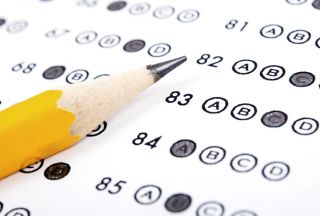Sport and Competition
Which States Have the Highest SAT Scores?
Key elements that affect competition of all kinds for all of us.
Posted May 20, 2013

Before you read further, jot down the three states you believe have the highest average SAT scores. Hint: Most people's guesses are way off the mark.
Is it really teacher-student interaction that affects how students perform? Most educators believe that more one-on-one with teachers improves learning. In her New York Times article, “Does Class Size Count?” Sara Mosle explained:
“To many educators, the answer seems obvious: Teachers who have fewer students can give each child more attention and tailored instruction. And parents agree… But the data on class size is not conclusive, if only because, in the last quarter-century, there’s been just one proper randomized, controlled study in the United States to measure, at sufficient scale, the effect of smaller and larger classes on student achievement. Known as Project STAR, it found that smaller classes do produce lasting gains, especially for economically disadvantaged and minority-group students.”

However, in their book, Top Dog: The Science of Winning and Losing, Po Bronson and Ashley Merryman found other convincing reasons for the benefits of smaller classes. They looked at many aspects of competition—from ballroom dancing contests to bike races, from selling a business proposal to SAT testing--and discovered core elements to succeeding in competitive situations and why SAT scores are higher in some states.
Among many other key elements of competing, Bronson and Merryman discovered:
- The stress of competition doesn’t disappear with experience.
- How we interpret the stress “drastically affects our performance.”
- Those who focus on what they might win choose to compete more while those who focus on their odds of winning choose to compete far less.
Circumstances also affect our “winning or losing” in ways you would never think and explain why teacher-student ratio may be the wrong interpretation of the benefits of small classes. After close analysis and controls in place, it may not be teacher interaction with students, but rather the fact that there is more competition between students in smaller classes.
Using SAT testing sites as one example, Bronson and Merryman, report that how students interpret stress is key in how well they do. With systemic controls for parent education, minority status, state and federal funding, “the kids who were taking the SAT in smaller, less crowded venues still had higher scores.” In other words and looking at different studies involving students, “The larger the number of participants involved in task, the worse the outcome for the individuals who are participating,” conclude the researchers.
According to Stephen Garcia and Avishalom Tor who analyzed every SAT score for the year 2005, “teens who take the SAT in big venues with lots of other test-takers score worse.” In Garcia’s view that includes other similar studies with students, “We don’t care as much about how we stack up against one competitor” when the field is large. In a large group of competitors, “the result doesn’t feel like a personal statement of our worth, so we don’t try as hard.”
Hence, surprisingly the states with students testing in smaller venues had the highest average SAT scores. I am guessing that they are not the ones you thought: Arkansas, Alaska, and Montana.
Ashley Merryman remarked, “What most of us know—or think we know—about rivalry and success is woefully incorrect. With the research [in Top Dog] we have uncovered and the stories we tell, you will never watch a football game, vote in an election, take a test, or make a presentation to your boss the same way again.”
She is so right. If you want to add to your own or offspring’s competitive fire and success, Top Dog may have just the tips and understanding you need.
What states did you initially guess had the highest SAT scores? Please note them in the comment section. It will be interesting to see how everyone assessed the situation.
- Follow Susan Newman on Twitter.
- Sign up for Dr. Newman's periodic Family Life Alert Newsletter
- Visit Susan's website: www.susannewmanphd.com
- See Susan’s latest book: The Case for the Only Child: Your Essential Guide
Copyright @ 2013 by Susan Newman




